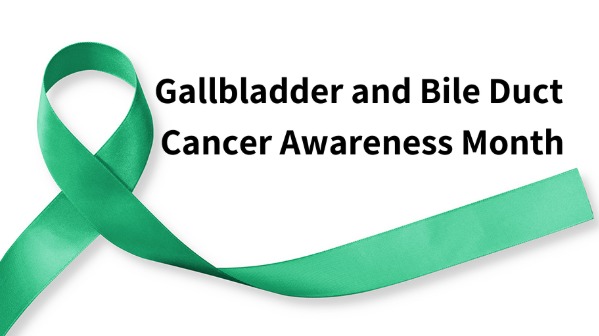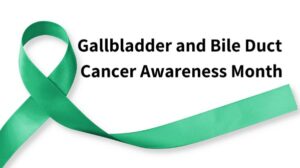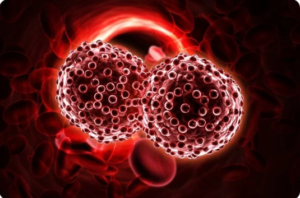Every February, Gallbladder and Bile Duct Cancer Awareness Month aims to educate people about these rare but serious cancers. Often undetected until advanced stages, these cancers require more awareness for early detection and better treatment outcomes.
What are Gallbladder and Bile Duct Cancer?
Gallbladder and bile duct cancers are types of biliary tract cancers that affect the digestive system. The gallbladder is a small organ under the liver that stores bile, while bile ducts carry bile from the liver to the small intestine. Cancer in these areas can be aggressive and hard to diagnose early.
Causes and Risk Factors
Several factors may increase the risk of developing gallbladder and bile duct cancer:
- Gallstones – Chronic inflammation caused by gallstones can increase cancer risk.
- Chronic Infections – Long-term infections in the gallbladder or bile ducts can lead to cancer.
- Obesity – Excess body weight is linked to a higher risk of gallbladder cancer.
- Age and Gender – Women and individuals over 60 are at higher risk.
- Family History – A history of biliary tract cancer in the family may increase risk.
- Toxins and Chemical Exposure – Exposure to industrial chemicals can be a contributing factor.
Symptoms to Watch For
Gallbladder and bile duct cancer often show no symptoms in the early stages, making them difficult to detect. However, as the disease progresses, symptoms may include:
- Jaundice – Yellowing of the skin and eyes due to bile buildup.
- Abdominal Pain – Persistent pain in the upper right side of the abdomen.
- Unexplained Weight Loss – Sudden, unexplained weight loss can be a warning sign.
- Nausea and Vomiting – Digestive discomfort and loss of appetite.
- Dark Urine and Pale Stools – Changes in bile flow can affect urine and stool color.
- Fever and Fatigue – General weakness and frequent infections.
Diagnosis and Detection
Early detection is challenging but crucial for better treatment. Doctors use various diagnostic tools, including:
- Ultrasound and CT Scan – Imaging tests to detect tumors.
- MRI and MRCP – Detailed scans of the gallbladder and bile ducts.
- Blood Tests – Liver function tests can help indicate issues.
- Biopsy – A tissue sample may be examined for cancer cells.
Treatment Options
Treatment depends on the stage of the cancer and the overall health of the patient. Options include:
- Surgery – If detected early, removing the gallbladder or affected bile ducts may be possible.
- Chemotherapy and Radiation Therapy – Used to shrink tumors and slow progression.
- Targeted Therapy – Newer treatments focus on specific cancer cells.
- Palliative Care – For advanced cases, pain management and symptom relief improve quality of life.
Prevention and Early Detection
While there is no guaranteed way to prevent these cancers, certain lifestyle changes may help reduce risk:
- Maintain a Healthy Weight – Obesity is a known risk factor.
- Eat a Balanced Diet – A diet rich in fruits, vegetables, and fibre supports liver and gallbladder health.
- Stay Active – Regular exercise lowers the risk of many cancers.
- Avoid Tobacco and Alcohol – Smoking and heavy drinking can increase cancer risk.
- Manage Gallstones Early – If you have gallstones, discuss treatment with your doctor to avoid complications.
- Routine Health Checkups – Regular screenings can help detect early signs of disease.

The Importance of Awareness
Since gallbladder and bile duct cancers are rare, they often do not receive the same attention as other cancers. Gallbladder and Bile Duct Cancer Awareness Month in February is an opportunity to educate others about symptoms, risks, and early detection. Increased awareness can lead to better research, improved treatments, and ultimately, more lives saved.
Frequently Asked Questions (FAQs)
What is the survival rate for gallbladder and bile duct cancer?
Survival rates depend on the stage at diagnosis. Early-stage detection offers a better prognosis, but advanced cases have a lower survival rate.
Can gallstones lead to gallbladder cancer?
Yes, chronic gallstones and long-term gallbladder inflammation can increase the risk of cancer.
How can I lower my risk of developing gallbladder or bile duct cancer?
Maintaining a healthy weight, eating a balanced diet, staying active, and avoiding smoking and excessive alcohol consumption can help lower the risk.
Conclusion
Gallbladder and bile duct cancer remain silent but serious health threats. Raising awareness, recognising symptoms early, and seeking timely medical attention can improve survival rates. This February, take the time to learn more and spread the word about these lesser-known cancers.




